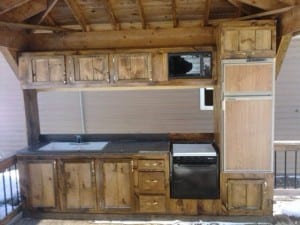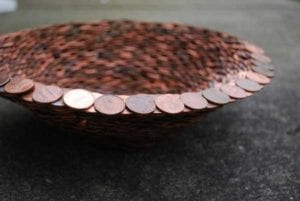Last Updated on March 12, 2024 by teamobn
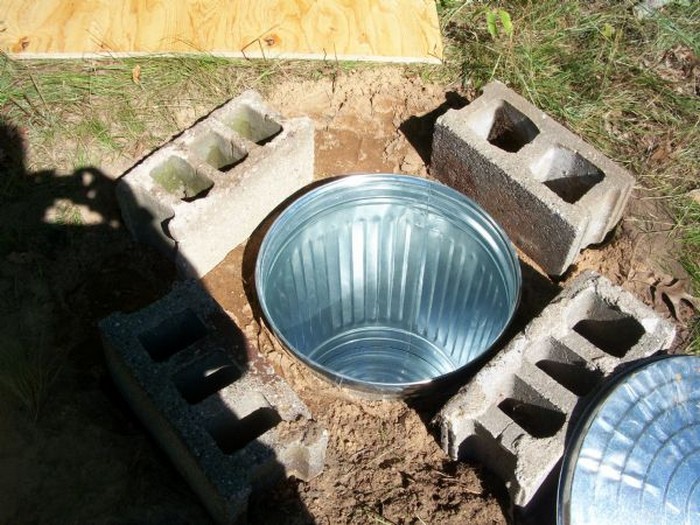
Why use a refrigerator to store vegetables during the winter when you can use the natural (and free) cold weather temperature with a root cellar?
Trash can root cellars come in different types, sizes, and costs. It doesn’t always have to be a big investment or a big project, and this trash can root cellar is a good option if you’re looking for something small, simple, and cheap! A root cellar is a great way to store vegetables during winter because it takes advantage of the naturally cold weather.
Root cellars are typically underground, which helps to keep the temperature inside cool and consistent. This is ideal for storing vegetables, which need to be kept cool to stay fresh. Additionally, root cellars are typically free to use, which makes them a great option for those on a budget.

Got a backyard deep enough to bury a metal trash can? Great! If you’re lucky enough to have a backyard with enough space to bury a metal trash can, the next thing to consider is the temperature. Depending on where you live, the ground temperature could be too warm or too cold to properly store root vegetables. Of course, you wouldn’t want to ruin or spoil your root vegetables if your ground is too warm or too cold to serve as proper storage.
However, If you find yourself in a situation where your storage area is extremely cold, you can still take some measures to protect your produce. Insulation panels can help to regulate the temperature and keep your food from freezing. Taking these precautions can help ensure your food remains fresh and edible.
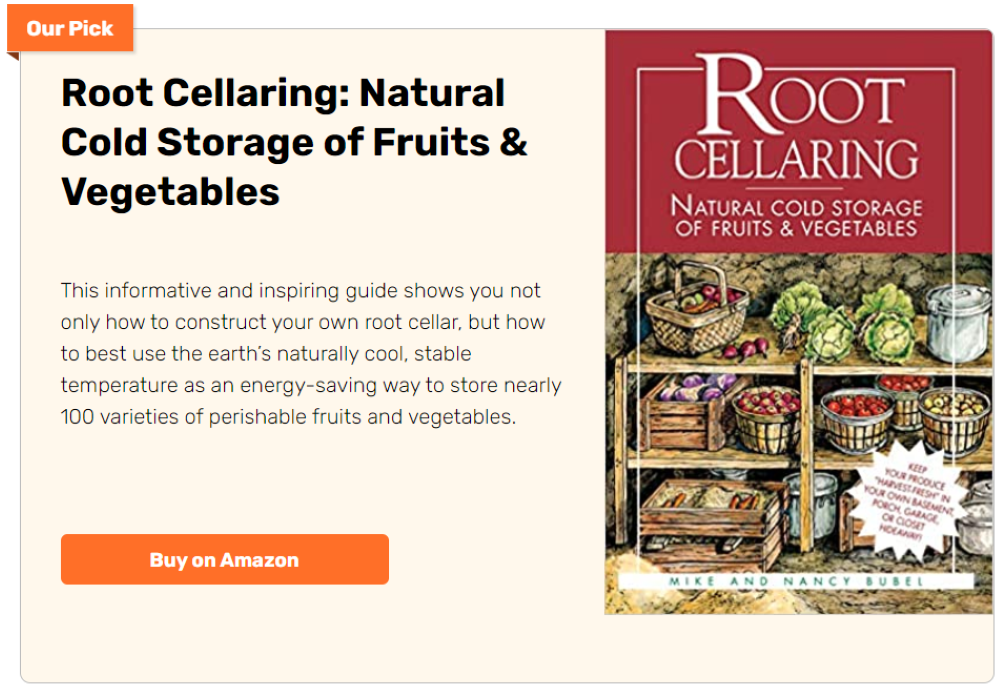
Contents [show]
Making a Trash Can Root Cellar
Click on any image to start the lightbox display. Use your Esc key to close the lightbox.![]()
Materials
- Metal Trash Can with tight-fitting Lid
- Lots of Straw Mulch
- Stones
- 4 Large Rocks/Bricks
- Plastic Cover
Tools
- Shovel
- Drill/Hammer and a Nail (for punching holes)
Steps
1. Prepare the Trash Can
- Begin by using the drill or hammer and nail to punch several holes around the base and sides of the metal trash can. These holes are crucial for air circulation, preventing your stored vegetables from rotting.
2. Choose the Right Location
- Select a spot in your backyard that is easily accessible throughout the winter. The location should have well-draining soil to avoid water logging, which could damage your stored produce.
3. Dig the Hole
- Dig a hole deep enough to fit the trash can with your shovel. The hole should be slightly larger than the can, allowing for insulation materials to be packed around it.
4. Add Insulation at the Bottom
- Before placing the trash can in the hole, lay a layer of straw mulch at the bottom. This layer acts as insulation to maintain a stable temperature inside the cellar.
5. Place the Trash Can
- Carefully place the metal trash can into the hole. Ensure it sits firmly on the straw mulch layer without tilting.
6. Add Side Insulation
- Pack straw mulch tightly around the sides of the trash can. This insulation is essential to protect your vegetables from freezing temperatures during the winter.
7. Add Stones for Drainage
- Surround the top of the mulch with stones to aid in drainage. This will prevent water from pooling around the can, especially during snow melts or heavy rains.
8. Secure the Lid
- Place the tight-fitting lid on the trash can. Ensure it fits securely to keep out pests and moisture.
9. Add Additional Insulation
- Cover the lid with a thick layer of straw mulch for extra insulation. Then, place the four large rocks or bricks around the edges of the lid to weigh down the plastic cover.
10. Protect with a Plastic Cover
- Cover the entire area with a plastic cover to protect it from rain and snow. Secure the edges of the plastic cover with more stones or bricks to keep it in place.
Optimal Vegetables for Trash Can Root Cellar Storage
A trash can root cellar provides an ideal setting for storing certain types of vegetables. The key to successful storage is understanding which vegetables thrive in a trash can root cellar’s cool, dark, and moderately humid environment. Selecting the right vegetables for this unique storage solution can significantly extend their shelf life without sacrificing quality or taste.
Root Vegetables
Root vegetables are the quintessential candidates for trash can root cellar storage. Their natural hardiness and low maintenance make them perfect for long-term storage.
- Carrots and Parsnips: These vegetables can be stored for several months. Ensure they are dry and remove any tops before storage.
- Beets: Beets are stored well in a trash can root cellar. Trim their tops and keep them in a container with a loose lid to maintain humidity.
- Potatoes: Ideal for root cellar storage, potatoes should be kept in the dark to prevent greening. Ensure they are well-cured before storing them.
- Turnips and Rutabagas: These can also be stored for an extended period. Like beets, they benefit from being kept in a container to retain some humidity.
Alliums
The allium family, known for its robust flavors, also fares well in a trash can root cellar.
- Onions and Garlic: Store these in a dry, well-ventilated area of your trash can root cellar. They prefer lower humidity and can be hung in mesh bags or stored in baskets.
- Shallots: Similar to onions and garlic, shallots thrive in cooler, dry conditions. Proper ventilation will prevent them from becoming moist.
Cabbage Family
Members of the cabbage family are well-suited to the cool conditions of a trash can root cellar.
- Cabbages: These can last several months when stored properly. Keep them whole and avoid washing them before storage.
- Brussels Sprouts: Store on the stalk if possible or in a container to maintain humidity.
Squashes and Pumpkins
Winter squashes and pumpkins prefer the slightly warmer and drier section of the trash can root cellar.
- Winter Squash and Pumpkins: These varieties have a hard shell that protects them, allowing for storage throughout the winter. Ensure they are fully mature and have hardened skins before storing.
What do you think of this winter trash can root cellar project? Will you be making your own version of a trash can root cellar for the winter?
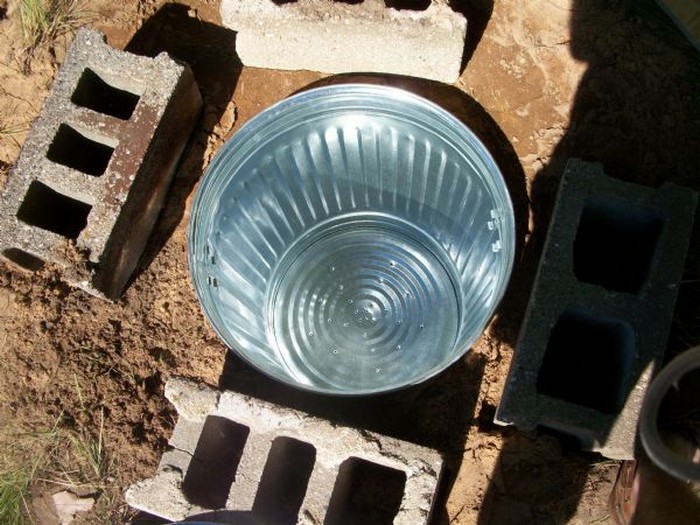


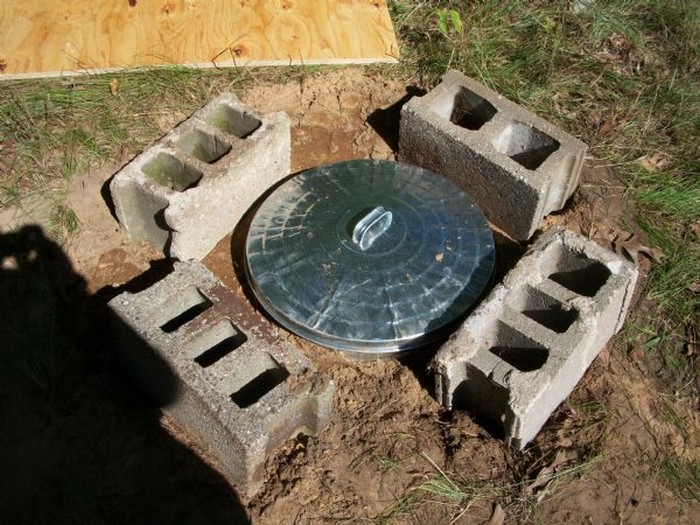
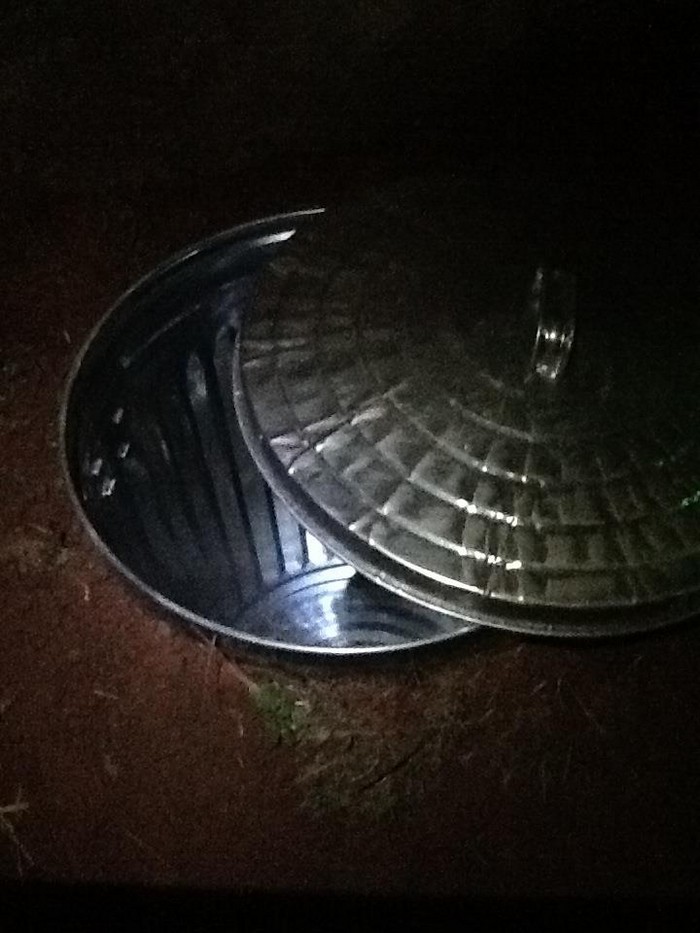
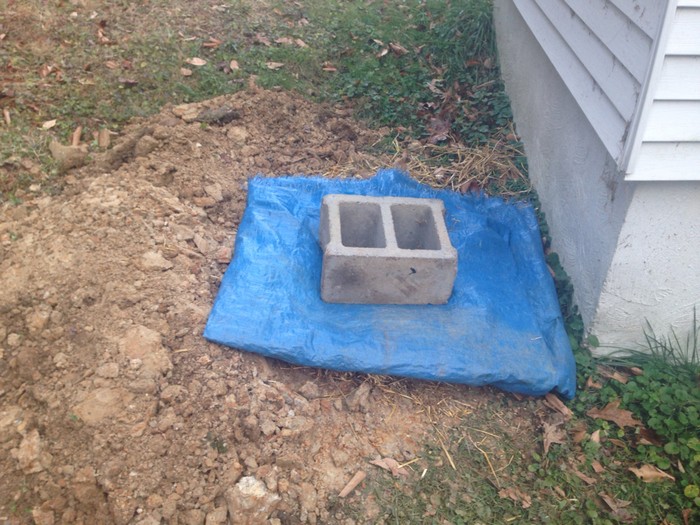
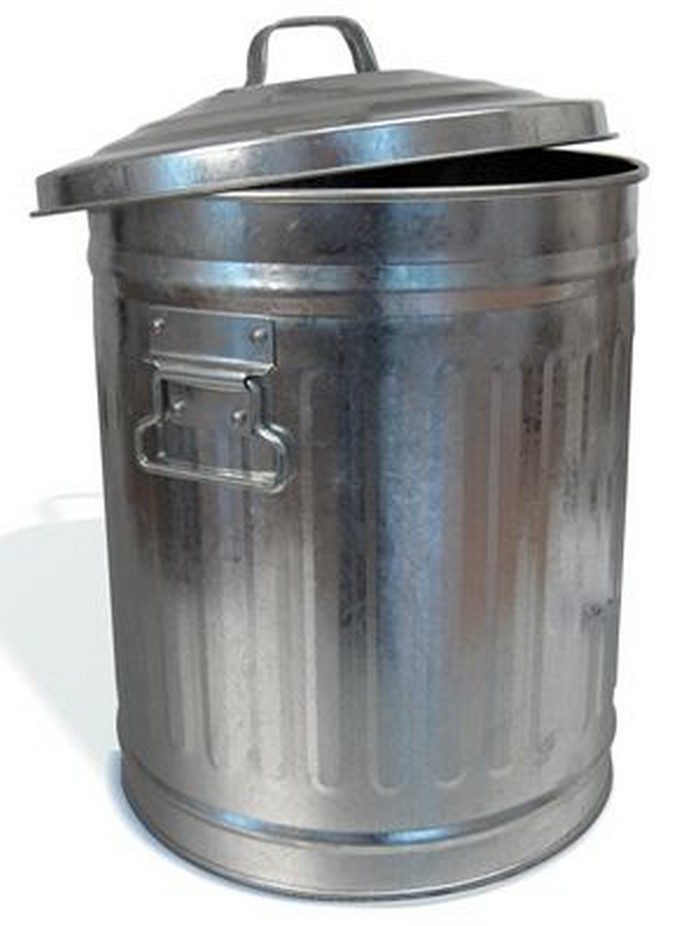
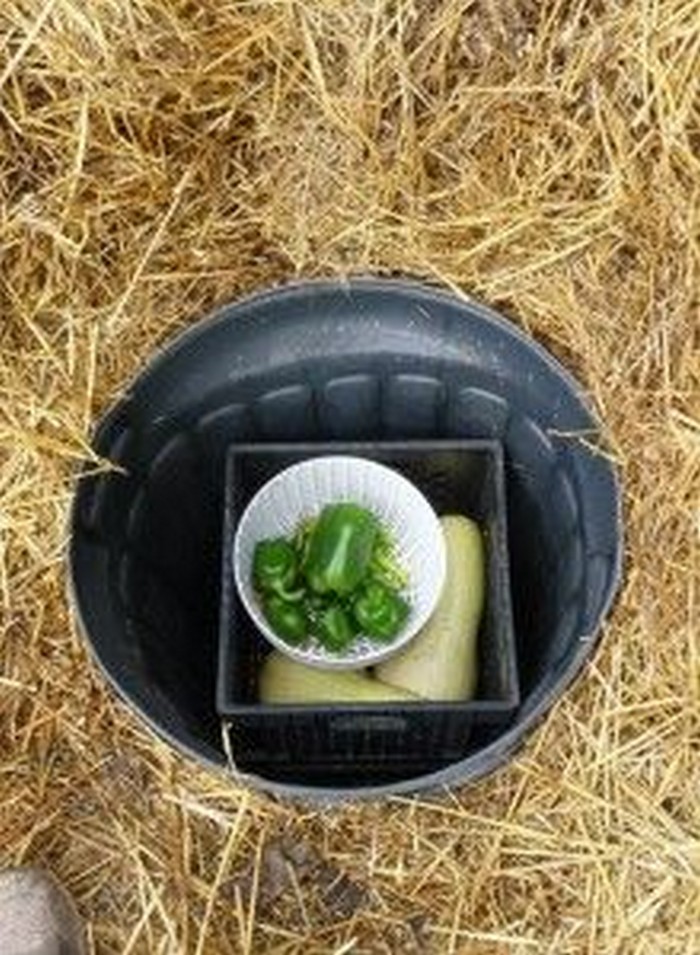
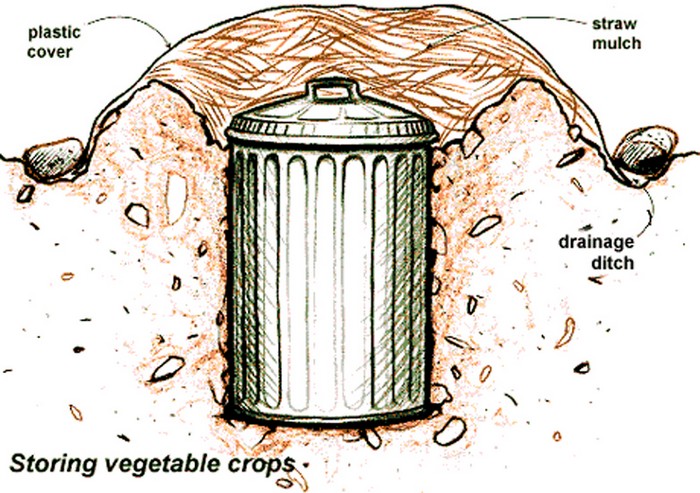
Pest and Rodent Prevention Strategies
A trash can root cellar provides an excellent environment for storing vegetables during the colder months. However, its very nature can also attract pests and rodents seeking food and shelter. Preventing these intruders from accessing your stored produce is crucial to maintaining the quality and quantity of your vegetables throughout the winter.
Secure the Perimeter
- Tight-Fitting Lid: Ensure the lid of your trash can fits tightly and securely. This simple step can deter many pests and rodents from entering.
- Wire Mesh: Consider covering ventilation holes with wire mesh or hardware cloth. This allows air to circulate while keeping smaller rodents and insects out.
- Seal Gaps: Regularly inspect the area around your trash can root cellar for gaps or holes that could serve as entry points. Use soil, stones, or concrete to seal these gaps effectively.
- Elevate with Bricks or Blocks: Elevating the base of your trash can root cellar on bricks or concrete blocks can deter burrowing rodents. This modification prevents them from easily accessing the cellar from the ground.
- Perimeter Fencing: Installing a small fence around the trash can root cellar area can discourage larger pests and animals from getting close. Use a fine mesh or hardware cloth that is buried at least a foot underground to prevent digging.
- Door Sweep for Lid: Attach a door sweep or rubber gasket around the edge of the trash can lid. This addition ensures an even tighter seal, making it difficult for small pests to squeeze through.
- Essential Oil Mixtures: Soak cotton balls in peppermint or eucalyptus oil and place them around the trash can root cellar. The strong scent acts as a natural deterrent for mice and other rodents.
Maintain Cleanliness
- Remove Debris: Keep the area around your trash can root cellar free from debris, such as fallen leaves or grass clippings, which can attract pests.
- Proper Waste Management: Ensure that all organic waste or spoiled vegetables are promptly removed and disposed of far from your root cellar. This reduces the likelihood of attracting pests with the scent of decaying produce.
- Regular Weeding: Keep the area around your trash can root cellar free of weeds and overgrowth. Dense vegetation can provide hiding spots and nesting materials for pests.
- Soil Management: Regularly turn and aerate the soil around the trash can root cellar to discourage insects and pests that prefer compacted, undisturbed ground.
- Gravel Barrier: Create a gravel barrier around the trash can root cellar. This barrier discourages pests and rodents from approaching, as they typically avoid crossing such open, unstable surfaces.
- Organize and Elevate Tools: Keep any tools or accessories used for the trash can root cellar organized and elevated off the ground. This practice reduces hiding spots for pests and keeps the area tidier, further deterring pest interest.
Use Natural Repellents
- Herbal Deterrents: Planting herbs such as mint, lavender, or garlic around your trash can root cellar can act as natural deterrents for rodents and insects.
- Diatomaceous Earth: Sprinkling diatomaceous earth around the perimeter of your trash can root cellar can help to control insect pests. This natural powder is harmless to humans and vegetables but lethal to insects with exoskeletons.
- Companion Planting: Beyond the immediate vicinity of the trash can root cellar, consider planting pest-repellent plants in your garden. Marigolds, for example, can deter nematodes and other insects, while chrysanthemums can repel a wide range of pests. These plants create a natural protective barrier around your root cellar area.
- Predator Encouragement: Encourage natural predators of common pests into your garden. Birds, for example, can be attracted by feeders and baths, which help to reduce insect populations naturally. Similarly, leaving small woodpiles or sheltered areas can attract beneficial predators like hedgehogs, which prey on slugs and other insects.
- Cedar Chips: Spread cedar chips around the perimeter of the trash can root cellar. Cedar’s natural oils are a deterrent for many insects and can help keep the area pest-free.
Regular Inspections
- Monitor for Activity: Regularly inspect the interior and exterior of your trash can root cellar for signs of pest or rodent activity. Look for droppings, gnaw marks, or disturbed vegetables.
- Check for Weaknesses: Review the structural integrity of your trash can root cellar. Even minor damage can become an entry point for pests and rodents.
- Use of Traps: Strategically place non-toxic traps around the trash can root cellar to monitor for rodent activity. These traps can provide early warning signs of a potential problem, allowing you to address it before it escalates.
- Seasonal Check-ups: At the change of each season, perform a thorough inspection of your trash can root cellar. This includes checking for any signs of entry, assessing the condition of stored vegetables, and verifying that the insulation and ventilation systems are intact and functioning properly.
- Moisture Control: Regularly check the inside of your trash can root cellar for excess moisture, which can attract pests and lead to mold and mildew. Use moisture absorbers or ventilate more effectively to keep the air dry.
- Document Observations: Keep a log of your inspections, noting any changes, potential pest sightings, or areas of concern. This record can help you track the effectiveness of your pest management strategies over time and make adjustments as needed.
Professional Assistance
- Consult Experts: Consulting with a pest control professional may be worthwhile if you suspect a significant pest or rodent problem. They can offer tailored solutions and preventative measures to protect your trash can root cellar.
Implementing these pest and rodent prevention strategies will help ensure that your trash can root cellar remains a safe and effective storage solution for your vegetables. By taking these steps, you can enjoy the benefits of your root cellar without the drawbacks of pest and rodent infestation.
Maintenance and Care of Your Trash Can Root Cellar
A trash can root cellar is a simple, yet effective solution for storing vegetables in a cool, dark, and humid environment. To maintain this environment, regular checks and maintenance tasks are necessary.
This section outlines essential practices for upkeep your trash can root cellar.
Inspect for Damage
The metal trash can, the core component of your root cellar, is susceptible to rust and wear over time, especially when buried underground. Conduct thorough inspections every few months, looking for any signs of deterioration such as rust spots, holes, or dents that could compromise the cellar’s ability to maintain a stable environment.
You can treat the area with rust-proof paint or sealant if rust is detected early. For more severe damage, replacing the can may be necessary to prevent pests from entering or maintaining the desired temperature and humidity levels.
The lid’s condition is critical for keeping your stored vegetables safe from external elements and pests. Inspect the lid regularly for any signs of warping, cracking, or damage to its sealing ability.
A compromised lid can lead to moisture intrusion or pest infiltration, both of which are detrimental to the stored produce. Consider adding a rubber gasket or seal around the rim for an enhanced tight seal if the original design does not provide sufficient protection. If the lid is beyond minor repairs, replacing it is essential to ensure the effectiveness of your trash can root cellar.
Ventilation Management
The ventilation system in your trash can root cellar plays a vital role in regulating airflow and preventing the accumulation of harmful gases and excess moisture, both of which can cause your vegetables to spoil prematurely.
It’s important to regularly check that the air circulation holes are free from blockages such as soil, debris, or ice, which can impede airflow. A simple inspection and clearing of these holes can significantly affect the longevity and freshness of your stored produce.
The need for ventilation in your trash can root cellar may vary with the changing seasons. During warmer months, increased air flow may be necessary to prevent the interior from becoming too humid, while in cooler months, minimizing ventilation can help maintain a stable, cool environment.
Consider installing adjustable ventilation covers that can be opened or closed to regulate the air entering the cellar. Monitoring the internal conditions with a thermometer and hygrometer will guide you in making the necessary adjustments to ventilation, ensuring your vegetables are stored under optimal conditions year-round.
Cleanliness and Hygiene
Maintaining cleanliness within your trash can root cellar is fundamental to preventing mold and bacteria growth, which can spoil your produce and create unhealthy storage conditions. At the beginning and end of each storage season, empty the cellar to conduct a thorough cleaning. Remove all vegetables, inspecting each for signs of spoilage or damage.
Spoiled vegetables should be disposed of immediately to prevent the spread of mold or bacteria to healthy produce. Clean the interior surfaces of the trash can with a mild, food-safe disinfectant. Rinse thoroughly to ensure no residue remains that could harm your vegetables. This routine not only maintains the hygiene of your root cellar but also extends the life of your stored produce by creating a clean environment free from pathogens.
Effective pest and rodent management is vital to protect the integrity of your trash can root cellar and the vegetables stored within. In addition to the preventative strategies previously discussed, regular inspections for signs of infestation are crucial. Look for droppings, gnaw marks, or disturbed insulation, which could indicate the presence of pests.
Implement natural deterrents, seal entry points, and maintain a clean perimeter around your root cellar to minimize attraction. Taking immediate action upon detecting pests can prevent widespread infestation and potential damage to your stored goods.
Temperature and Humidity Checks
The internal conditions of your trash directly influence the longevity and freshness of your stored vegetables can root cellar. Using a thermometer and hygrometer, regularly monitor the temperature and humidity levels. The ideal temperature range for most root cellar vegetables is between 32°F (0°C) and 40°F (4°C), with a relative humidity of 85-95%.
Adjust your storage methods if the temperature or humidity deviates significantly from these ranges. This might include adding or removing insulation or modifying the ventilation to correct the internal environment. Such adjustments ensure that your vegetables remain in peak condition throughout storage.
Insulation and Cover
The insulation surrounding your trash can root cellar is key to maintaining stable temperature and humidity. Periodically inspect the straw mulch or any other insulation materials for signs of degradation or moisture accumulation.
Wet or deteriorating insulation materials can compromise the cellar’s ability to keep temperatures stable and may also attract pests. Replace any compromised insulation promptly to maintain the effectiveness of your root cellar. Additionally, ensure the insulation is properly positioned to maximize its insulating properties without obstructing ventilation.
Conclusion
Creating a trash can root cellar offers a cost-effective and sustainable method for storing vegetables through the winter months. This innovative storage solution leverages the natural cool temperatures of the earth, providing an ideal environment for preserving the freshness and nutritional value of your produce. The ease of maintenance and the ability to keep pests at bay further enhance its appeal, making it an excellent choice for gardeners and homeowners alike.
Improve your garden by knowing how to cultivate herbs with our guide next!

